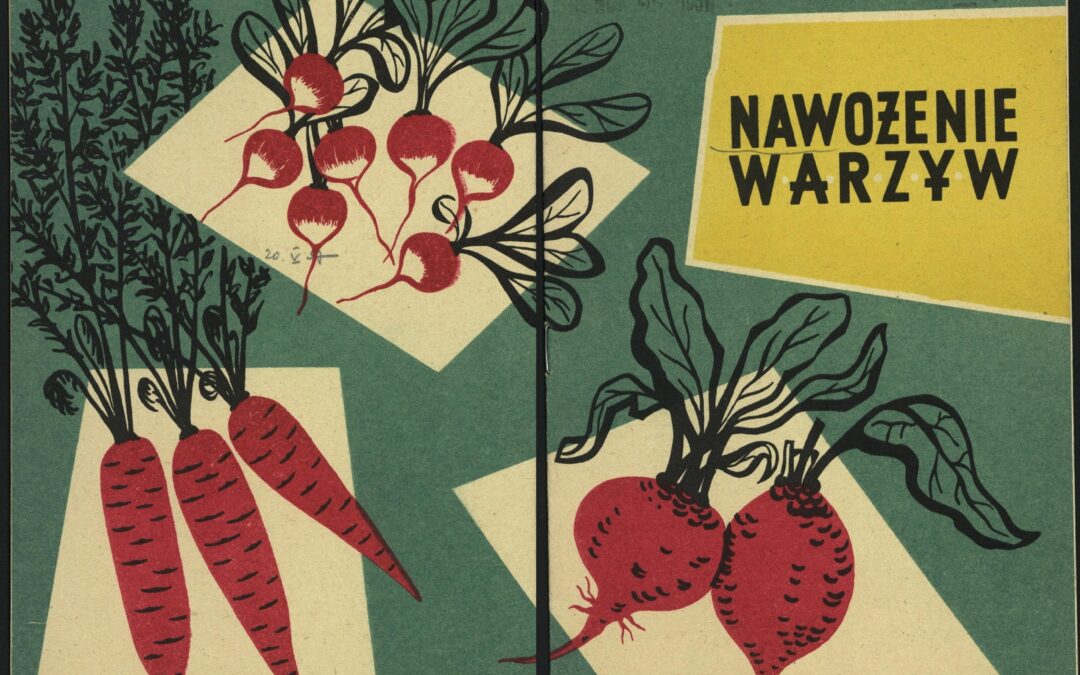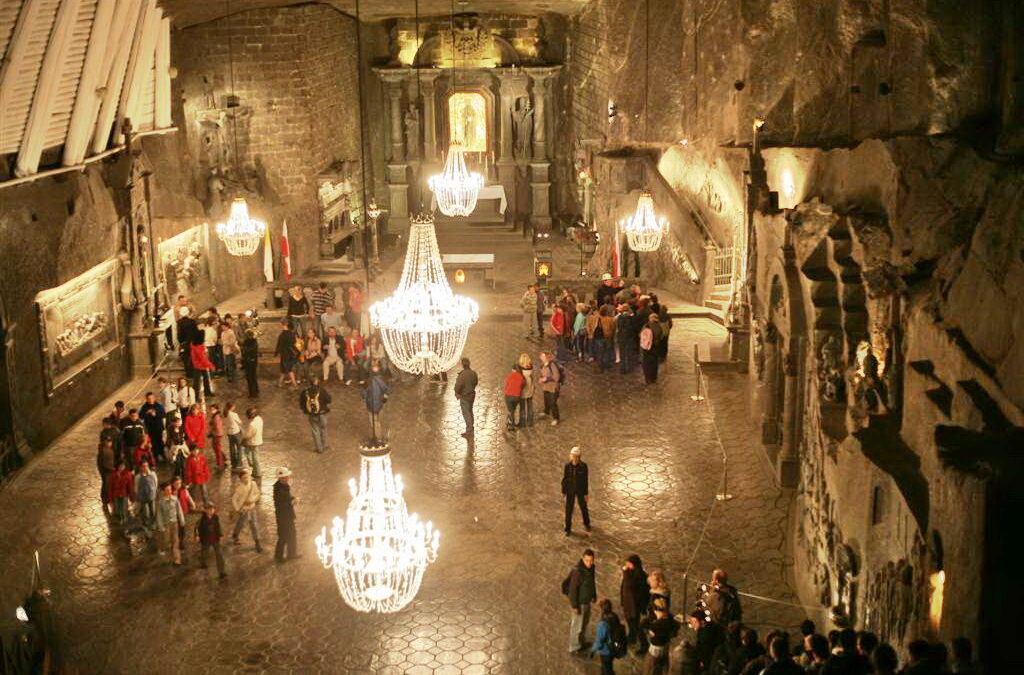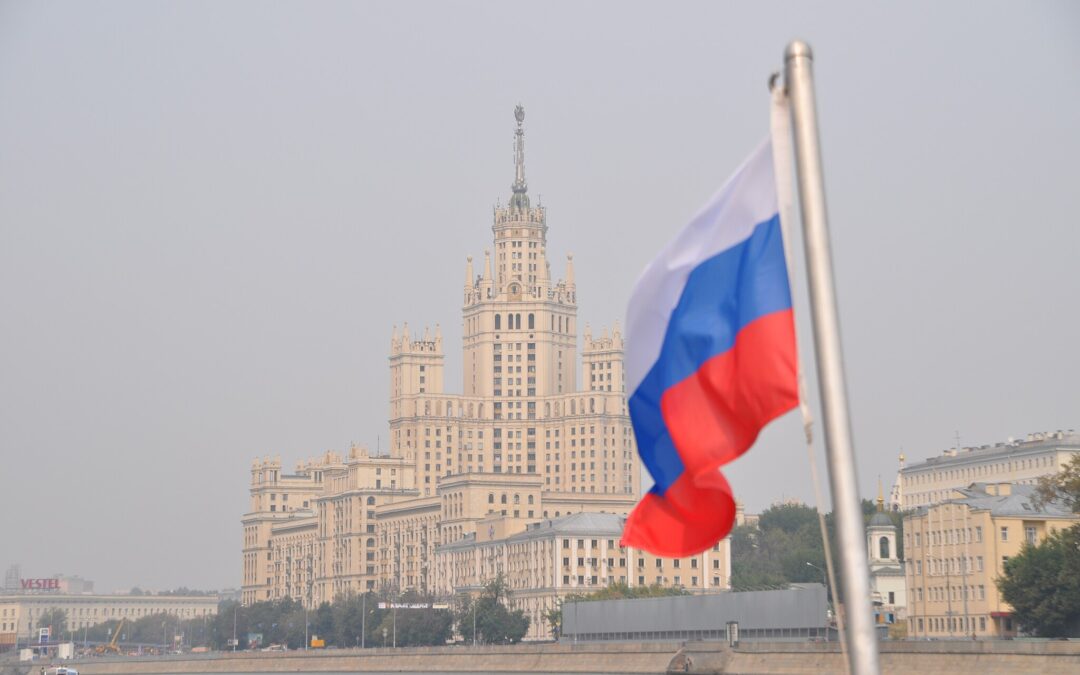Keep our news free from ads and paywalls by making a donation to support our work!

Notes from Poland is run by a small editorial team and is published by an independent, non-profit foundation that is funded through donations from our readers. We cannot do what we do without your support.
By Natalia Mętrak-Ruda
Both at home and abroad, Polish cuisine has a reputation for being meat heavy: kiełbasa sausages, breaded pork cutlets, smalec lard spread, pierogi dumplings stuffed with meat or topped with lardons. Yet Poland has a rich culinary and ideological vegetarian tradition.
Noble pioneers
In 1885, health advocate and spiritualist Konstanty Moes Oskragiełło wrote the following words:
Every truth that dares to proclaim itself in the public sphere must inevitably traverse three distinct phases. The first phase is that of derision, wherein it is deemed utterly impossible; the second phase witnesses the acknowledgement of its potential; and the final phase is marked by its earnest enactment. In America, England and Germany, the movement of vegetarianism has advanced to its second or even third phase; it shall assuredly carve its path here as well[1].
Oskragiełło, who almost single-handedly brought the idea of vegetarianism to Poland, worked relentlessly, organising meatless dinners in Warsaw and managing a vegetarian resort in Bojarów, a village which he founded 23 kilometres southwest of the Polish capital.
He also believed that the Slavs only started eating meat due to the influence of Germanic tribes – the ancestors of his contemporary Prussian oppressors – and that not eating meat was therefore a step on the path to regaining Polish independence and Slavic identity.
Importantly, the above quote was a response to a critique of vegetarianism published in the weekly magazine Tygodnik Romansów i Powieści. Moreover, its author did not use the loan word wegetarianizm, but the Polish term jarstwo (coming from the Polish word jarzyna, referring to edible plants).
This tells us that in the 19th century, vegetarianism was already known well enough in Poland to not only be scolded in the press but also to have its own indigenous word.
In the pantheon of global cuisines, Poland usually does not feature very highly, and is associated with many stereotypes.
Magdalena Tomaszewska-Bolałek dispels some of these myths and explores a varied, interesting and often surprising culinary culture https://t.co/6uaexKNAib
— Notes from Poland 🇵🇱 (@notesfrompoland) April 16, 2021
This might sound surprising today, but 150 years ago some Poles – alongside Oskragiełło – were intentionally giving up meat, following a trend born in mid-century England (the first Vegetarian Society was founded in Manchester in the early 1840s) which then spread across Europe and the United States.
These meat-free pioneers came from various backgrounds – socialist Janisław Jastrzębowski, who made a quite modern connection between women’s rights, workers’ rights and vegetarianism; theosophist and homeopath Józef Drzewiecki; mystic and yoga teacher Wincenty Lutosławski; as well as Maria and Augustyn Czarnowscy.
The latter couple authored the first Polish meatless cookbook – Jarska kuchnia (Vegetarian Cusine), published in 1898 with over 400 recipes – and founded the magazine Jarskie Życie (Vegetarian Life). On its cover, you can find an invocation that reads: “Hail to thee, noble vegetarians, pioneers so true / Who shatter the strongest prejudice, as morning breaks anew!”
The most influential of these “noble pioneers” was probably Apolinary Tarnawski, a doctor who opened an elegant vegetarian resort in Kosów Huculski. There, he treated the elite – from politicians such as Ignacy Daszyński and Roman Dmowski to the writers Gabriela Zapolska and Maria Dąbrowska, and the famous singer Hanka Ordonówna.
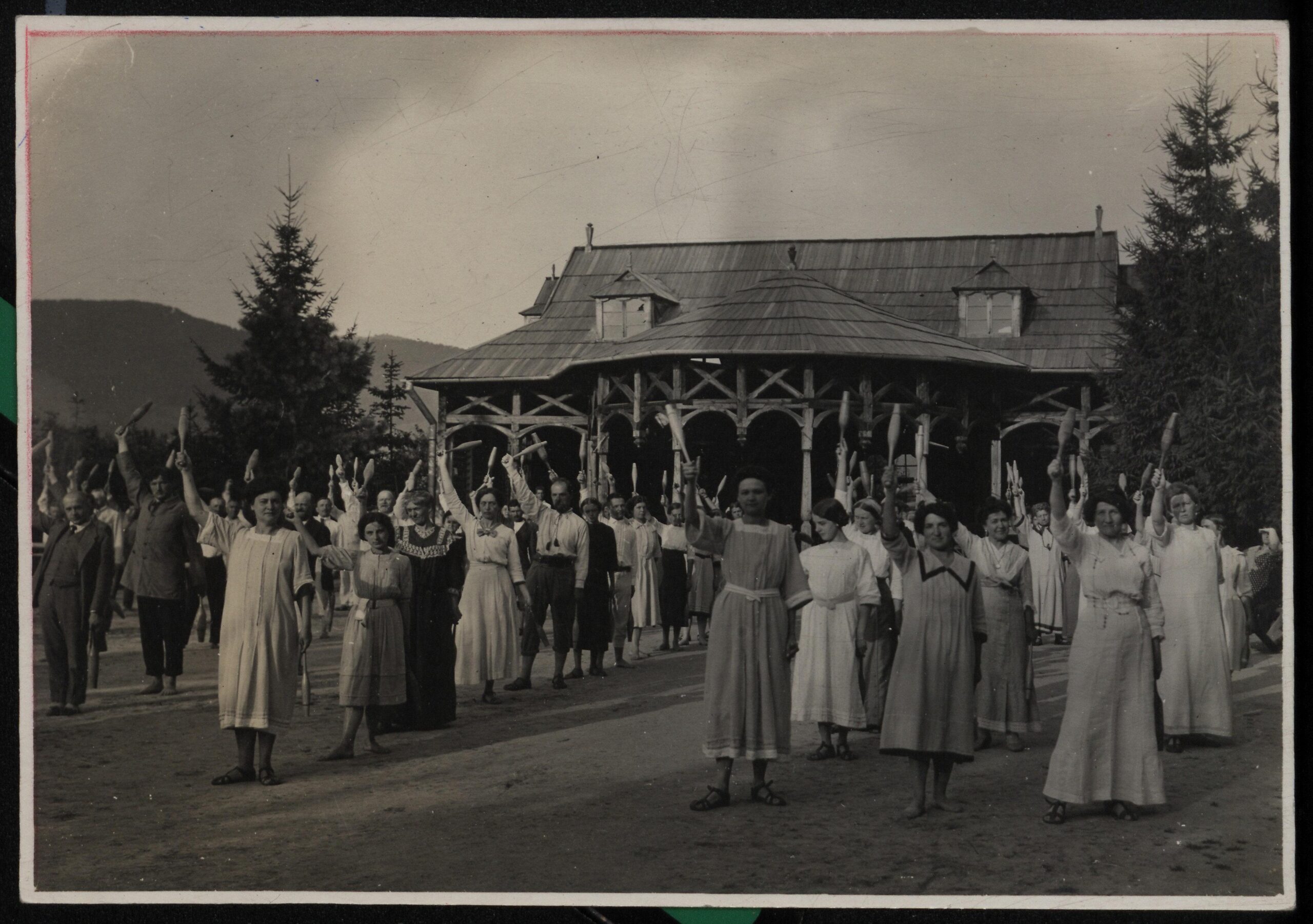
Gymnastics exercises at Apolinary Tarnawski’s vegetarian resort in Kosów Huculski (photo credit: Michał Affanasowicz/Polona.pl)
Tarnawski’s resort – similar to American doctor and cornflake co-inventor John F. Kellogg’s Battle Creek Sanitarium – offered swimming and sunbathing, gymnastics, fasting and a light, varied meatless diet that likely included eggs, dairy and potatoes, among other foods.
Yet its aim was to “heal the nation”, so that strong, fit Poles could defeat the Prussians, Russians and Austrians who had partitioned their homeland.
Accidental vegans
Although today vegetarianism is mostly associated with the urban, liberal left, its 19th-century roots in the UK and the US are working class and Protestant or even Puritan. In many European countries, before intensive animal farming lowered the cost of meat, most people could not afford it and treated it as a luxury eaten on special occasions.
In Poland, the largest part of the population, peasants, mostly did not eat animal products owing to their cost – though they certainly would not describe themselves as vegetarians. Later, during the communist period, constant shortages meant meat was rare.
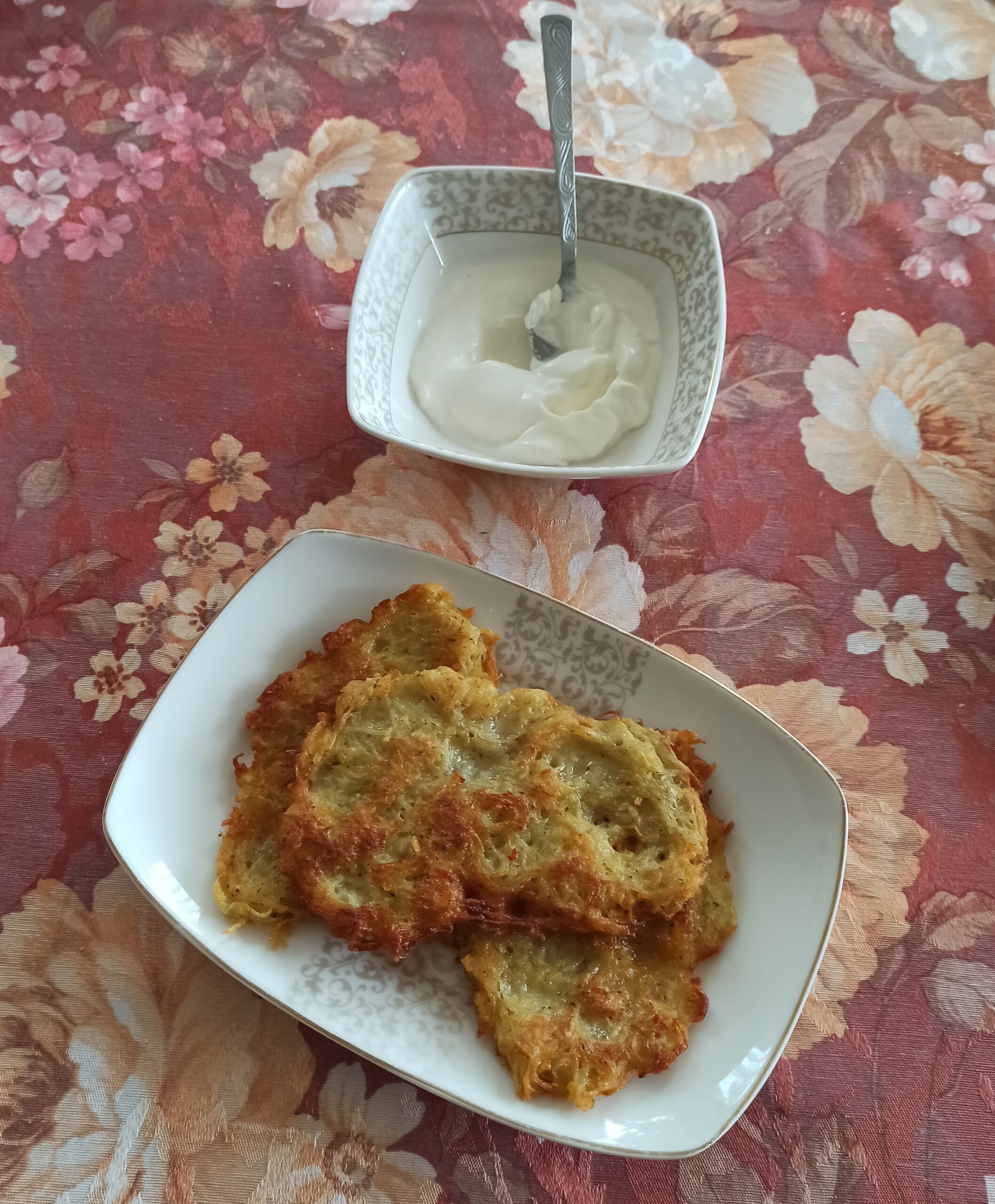
Potato pancakes (placki ziemniaczane) with sour cream (photo credit: Aw58/Wikimedia Commons under CC BY-SA 4.0)
Moreover, in Poland’s dominant Catholic tradition, abstaining from meat was a very important part of religious practice. While nowadays many Catholics still observe meatless Fridays, in the past fasting was much more frequent and sometimes covered almost half of the year.
For some Poles, this has combined to make meat feel like something special, an important part of many festive meals, even though it has now become so common and cheap.
The traditional Christmas Eve meal in Poland is free from meat, though does include fish.
While the early vegetarian movement has mostly been forgotten by the general public, modern vegan and vegetarian cooks often refer to the Polish peasant diet as an inspiration for their dishes.
This historical inspiration might not be direct – most of us wouldn’t be happy eating only groats, cabbage, turnips and herbs – but it is focused on sustainability, reducing waste, and the use of local, seasonal produce.
It also allows Poles to better understand their culinary roots, which have little to do with the invented traditions of chłopskie jadło (“peasants’ food”, a term often used to market meat products) or the wiejski stół (the wedding-reception “country table” comprising mountains of sausages, cold cuts and pork lard spread).
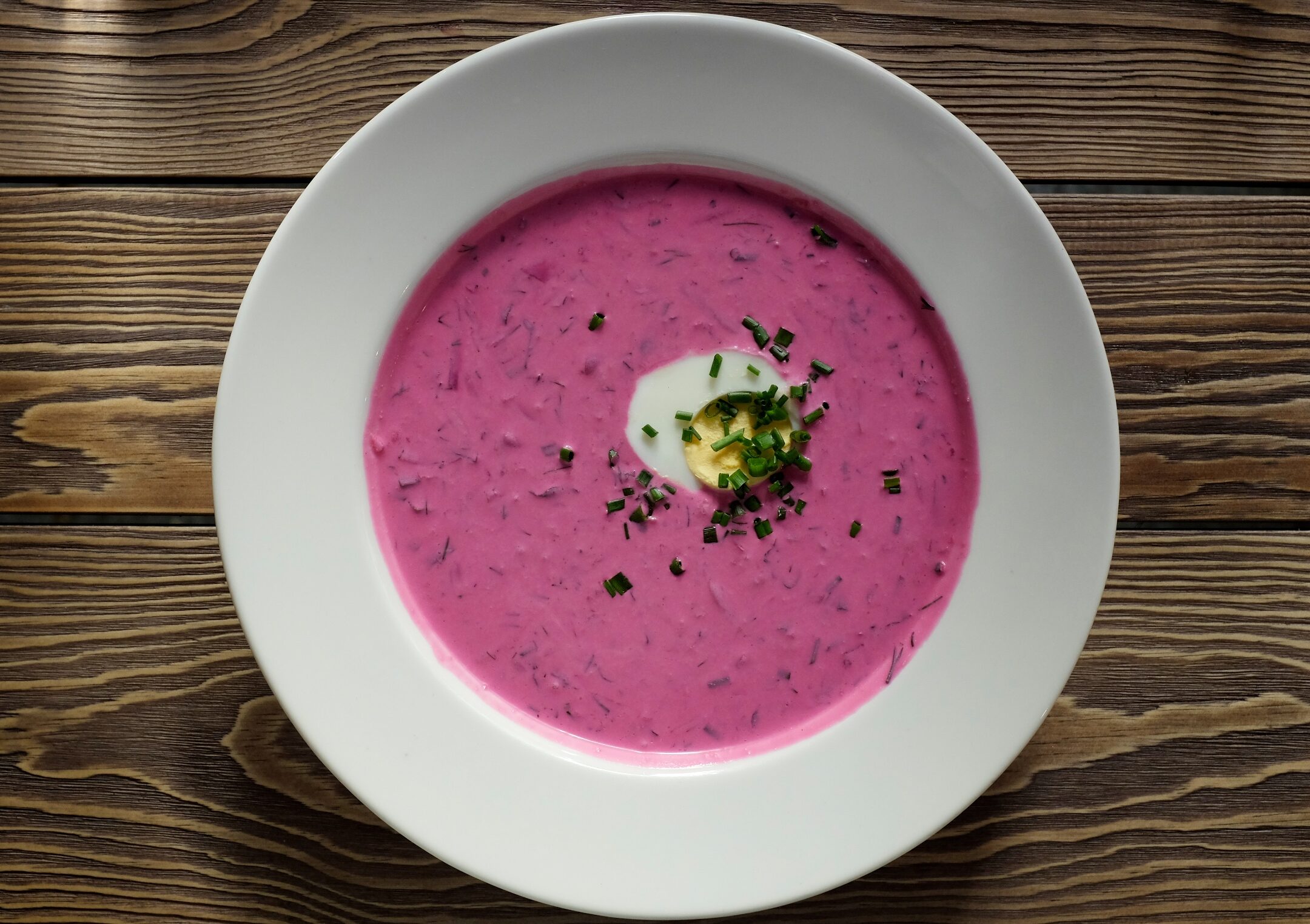
Cold borscht soup (chłodnik litewski) (photo credit: Dmitry Dzema/Wikimedia Commons under CC BY-SA 4.0)
These roots are more connected with the recipes that Paweł Ochman, author of the Weganon culinary blog, has unearthed in his research into vegan dishes that occur in Polish regional cuisine.
He has collected an incredible array of traditional delicacies that are naturally plant-based or can be easily “veganised”, ranging from various potato pancakes to countless dumplings and soups. Their ingredients include not only the ubiquitous cabbage, potato and onion, but also forgotten vegetables and legumes such as grass pea and scorzonera.
The modern movement
In the past decade, the rise of vegetarianism and, even more prominently, veganism has become a global trend. Meat and dairy alternatives as well as plant-based proteins from Asia (tofu, tempeh, seitan) and other nutritious foods from around the world (avocado, tahini, kimchi) have become staples in the vegetarian diet.
Poland has embraced this variety, especially in bigger cities where you can now easily find vegan ramen shops, plant-based sushi bars and meatless burger joints.
Warsaw has been ranked as the sixth most vegan-friendly city in the world https://t.co/fJbXXXxNgL
— Notes from Poland 🇵🇱 (@notesfrompoland) December 5, 2019
Yet you can also visit canteens that serve traditional Polish cuisine with a meat-free twist – schabowy breaded cutlet made from soya instead of pork, “herring” made from marinated oyster mushrooms, or minced “meat” made from millet groats ground with mushrooms.
Influential bloggers and authors – such as Ochman, Marta Dymek, who authored the bestselling Jadłonomia cookbooks on Polish vegan food, and Michał Korkosz, who has written two cookbooks on modern Polish vegetarian cuisine that are also available in English – have all contributed to the rising popularity of the trend.
Research from the Heinrich Böll Stiftung and the Polish Economic Institute suggests that between 4 and 10% of Poles describe themselves as exclusively vegetarian, yet meat-free cuisine is becoming increasingly present in the media and on supermarket shelves.
There is now wider availability of plant-based products in grocery shops, with vegan sweets and snacks made from ingredients such as peas, oyster mushrooms and sunflower seeds, and companies such as Dobra Kaloria and Bezmięsny producing meat and dairy alternatives.
Consumption of meat is falling in Poland while sales of vegetarian replacement products have grown 480% in three years, new data show https://t.co/oMxEPCk9xj
— Notes from Poland 🇵🇱 (@notesfrompoland) September 27, 2021
This is also reflected in restaurants, where chefs are taking traditional ingredients common in the Polish kitchen – potatoes, cabbage, buckwheat, millet, forest mushrooms, dill pickles, sauerkraut, apples – and transforming them in unexpected ways.
Millet, for example, works as a binding agent in vegan burgers and “cheesecakes”. Breaded oyster mushrooms, meanwhile, are a great alternative to schabowy. Crispy “lardons” can be made by frying cubes of celeriac or cooked buckwheat groats with smoked paprika and salt.
Recently, I even tasted a cross between a babka ziemniaczana (a potato cake typical of the Podlasie region) and a Vietnamese spring roll in Warsaw’s No Tu Olideli.
Although Asian flavours tend to dominate Poland’s plant-based restaurant scene, places such as Lokal Vegan Bistro in Warsaw, House of Seitan in Gdańsk and Kuchnia PoWolność in Poznań all offer excellent traditional Polish dishes made vegan.
Even though to many “vegan Polish cuisine” still sounds like an oxymoron and vegetarianism can often become the subject of heated debates, Oskragiełło would be proud of what has happened in Poland in recent years – the potential of a plant-based diet has surely been acknowledged.
Poland has become a vegan hot spot, with Warsaw named the third most vegan-friendly city in the world.
But, in a deeply conservative country, this challenge to tradition has led to a backlash, with veganism seen as part of a wider threat to Polish culture https://t.co/MtLPXf3mhN
— Notes from Poland 🇵🇱 (@notesfrompoland) November 15, 2019
[1] K. Moes-Oskragiełło, Odpowiedź na omowy jarstwa, Warszawa 1885, p. 11.

Notes from Poland is run by a small editorial team and published by an independent, non-profit foundation that is funded through donations from our readers. We cannot do what we do without your support.
Main image credit: Zbigniew Borna/Polona.pl
